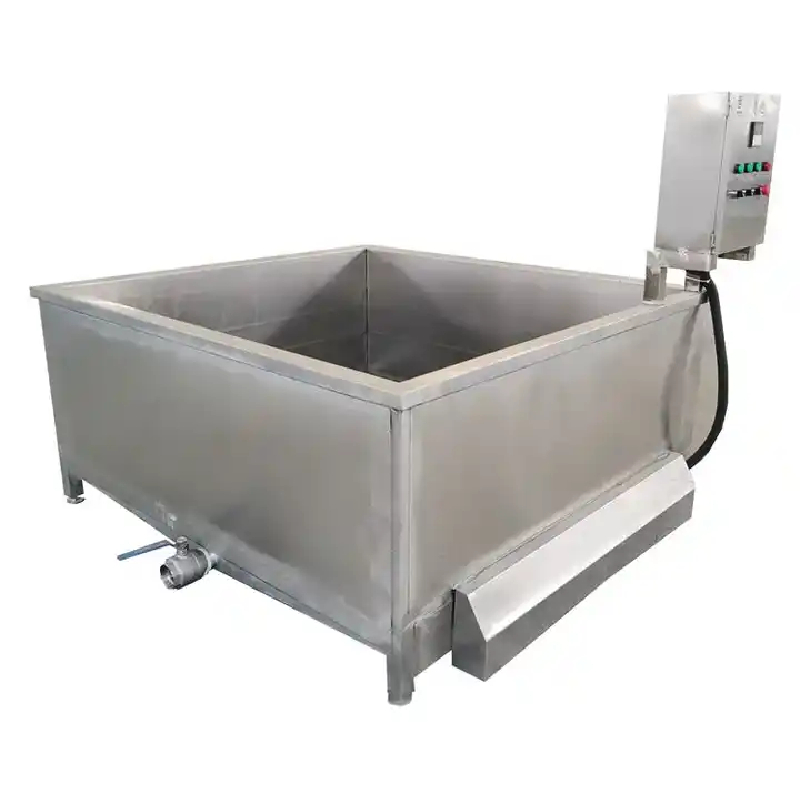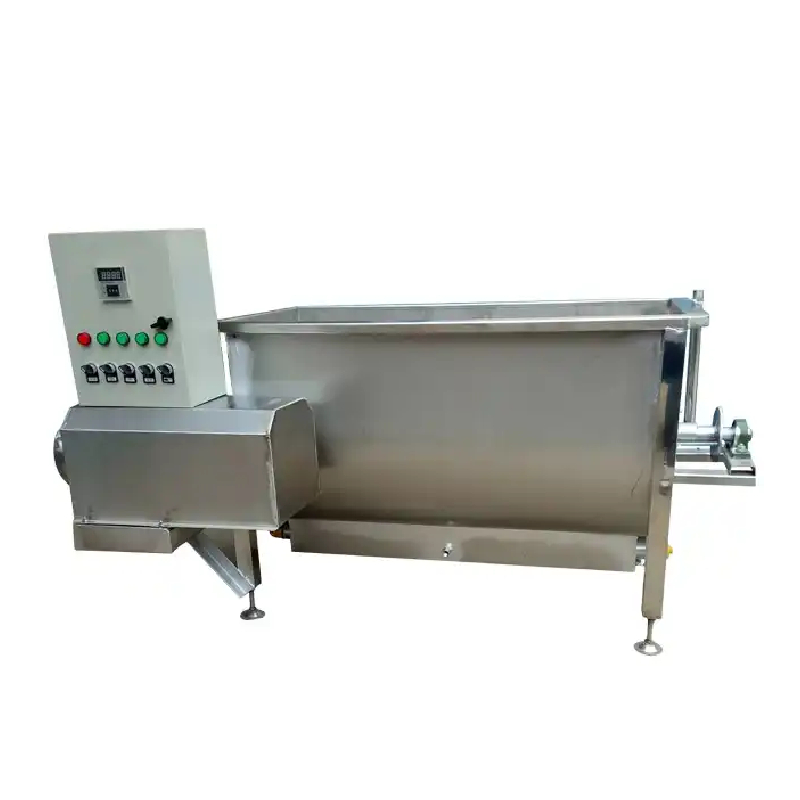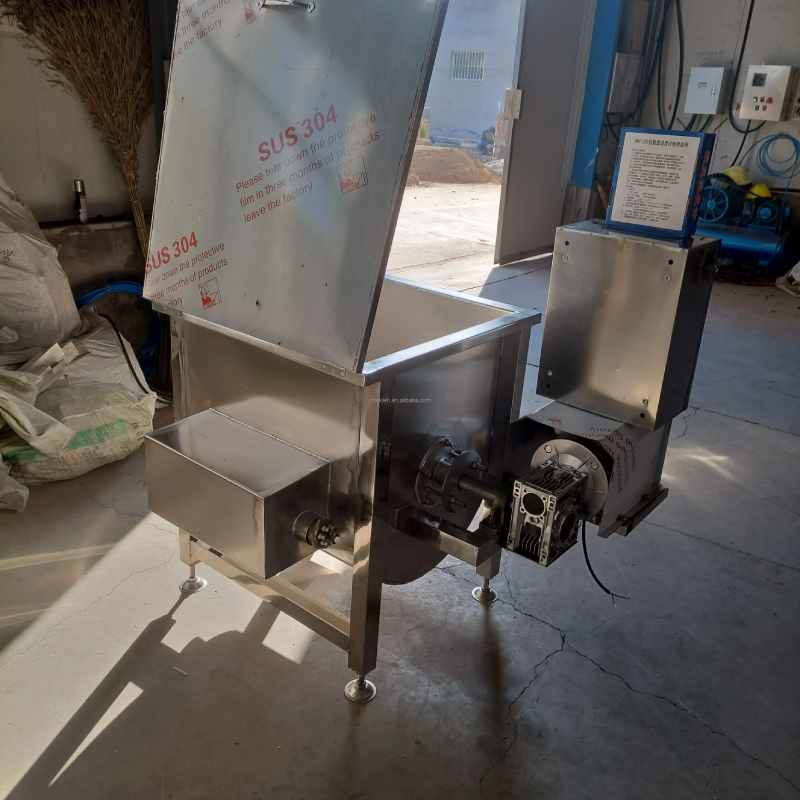Scalding Tank - Stainless Steel, Precise Temp, Fast Heat
Oct . 17, 2025 08:45 Back to list
Scalding Tank - Stainless Steel, Precise Temp, Fast Heat
If you’ve ever toured a small poultry plant, you know the bottleneck comes fast—right where the birds hit the scalding tank. That’s where efficiency is won (or lost). I’ve watched operators hustle between birds and thermostats, and—honestly—the difference between a good and a great setup is heat uniformity, control, and cleanability.

Product at a glance
Meet the Semi Automatic poultry scalding tank chicken scalding tank from Yize Machine (Origin: Jinwang Western Street, Industrial Zone, Anping County, Hengshui, Hebei, China). It’s built for small to mid-sized poultry processors handling chicken, duck, goose, or quail. It seems simple, but under the lid there’s thoughtful engineering aimed at repeatable results, minimal feather stubs, and easier downstream plucking.

Industry trend check
Processors are moving toward tighter temperature control (no surprises there), better insulation to cut energy costs, and documented hygiene. Semi-automatic systems hit the sweet spot—less labor than manual kettles, more affordable than full automation. And, to be honest, many customers say they prefer accessible mechanics they can maintain in-house.

Typical specifications
Real-world configurations vary by order; here’s a common setup many shops choose:
| Construction | 304 stainless steel wetted parts (316 optional); food-contact seams TIG welded |
| Capacity | ≈ 200–500 L (custom sizes available) |
| Heat source | Electric or gas-fired options |
| Temperature range | 40–70 °C, digital control; soft or hard scald modes |
| Insulation | Around 30–50 mm thermal insulation (energy savings vary) |
| Drainage & hygiene | Large-bore drain, clean-in-place-friendly geometry |

Process flow and quality controls
Materials: food-grade stainless per GB/T 3280 or ASTM A240. Methods: thermostatic heating with circulation (where configured) for even heat transfer. Testing: temperature uniformity checks (plants often target ≤2 °C delta across the bath), weld dye-penetrant inspection on critical seams, and insulation loss assessment. Service life: around 8–10 years in typical use with routine descaling and gasket replacement. Industries: poultry slaughter lines, farm co-ops, restaurant commissaries, teaching labs.

Why buyers pick this scalding tank
- Consistent feather release—less time in the plucker, fewer stubs.
- Energy-aware insulation and covered bath (saves more than you’d think, especially in winter).
- Easy-to-clean basin and drain—operators actually use it daily, which says a lot.
- Compact footprint for small facilities and mobile units.

Vendor comparison (snapshot)
| Vendor | Material & Build | Temp Control | Certs (typical) | After-sales |
|---|---|---|---|---|
| Yize Machine scalding tank | 304/316 SS, insulated, TIG welds | Digital, semi-automatic | ISO 9001; CE declaration (on request) | Spare parts + remote guidance |
| Local Fabricator | Varies; sometimes mild steel | Manual or basic thermostats | Depends on shop | Easy on-site support |
| Generic Importer | Mixed quality; limited insulation | Variable accuracy | Unclear documentation | Warranty varies |

Customization
Options include capacity, heating method, drain position, agitation/circulation, lid type, and control panel language. For halal-focused lines, gentle “soft scald” profiles are common; for waterfowl, harder scalding profiles are available.

Real-world feedback
- Midwest co-op (USA): “Feather removal improved; birds spend less time in the picker—saves blades.”
- Coastal duck processor: “Heat uniformity surprised us; fewer patchy scalds.”
- Catering commissary: “Cleaning is quick—drain and spray-down between batches.”

Compliance, testing, documentation
Documentation typically includes materials traceability for stainless steel, QA test sheets (uniformity targets, heater function checks), and user manuals. Equipment is designed to align with CE safety concepts and produced under an ISO 9001 quality system; local acceptance and regulatory conformity should be verified per your jurisdiction. For scalding temperatures, follow species-specific guidance and your HACCP plan.
Curious to benchmark your existing scalding tank? Ask for a heat map test (multi-point temperature checks) and compare ΔT across zones. It’s a small step that pays off.
Origin: Jinwang Western Street, Industrial Zone, Anping County, Hengshui City, Hebei Province, China. If you need sizing help, send bird weights, hourly throughput, and scald profile (soft/hard)—the team will match a scalding tank to your line.
- USDA FSIS, Poultry Processing Guidelines—scalding practices and temperatures.
- Regulation (EU) 2023/1230 (Machinery), replacing Directive 2006/42/EC.
- ASTM A240 / A240M—Standard Specification for Chromium and Chromium-Nickel Stainless Steel Plate, Sheet, and Strip.
- ISO 9001:2015—Quality management systems—Requirements.
-
Baby Chicks Cage – Global Solutions for Sustainable Poultry Farming
NewsNov.22,2025
-
Baby Chick Cage: The Essential Guide to Brooding Solutions for Poultry Farmers
NewsNov.22,2025
-
Understanding Square Grain Silos: Global Impact, Benefits, and Trends
NewsNov.21,2025
-
Automatic Feeding Line System-Anping County Yize Metal Products Co., Ltd.|Automated Feeding&Watering
NewsNov.21,2025
-
What is a Silo Automatico? Industry Applications, Benefits & Future Trends
NewsNov.20,2025
-
Practical Guide to Egg Laying Chicken Cages for Sale – Durable, Scalable & Sustainable
NewsNov.19,2025






